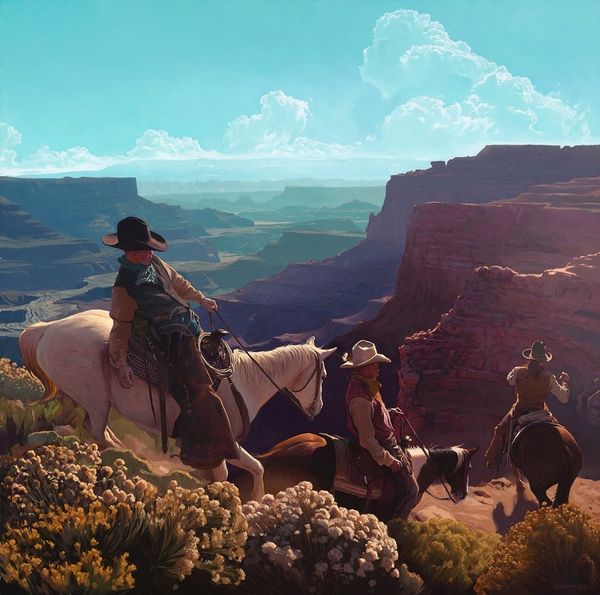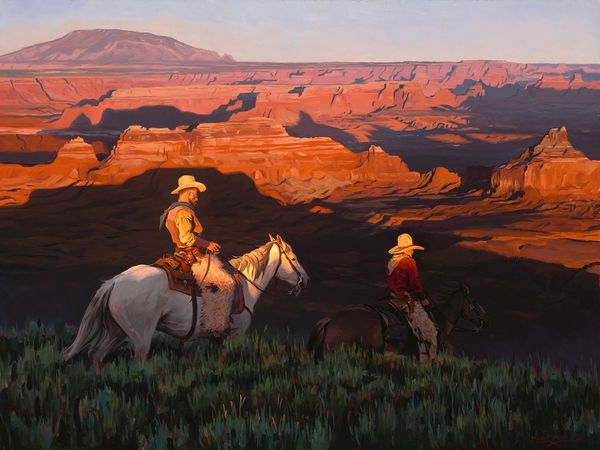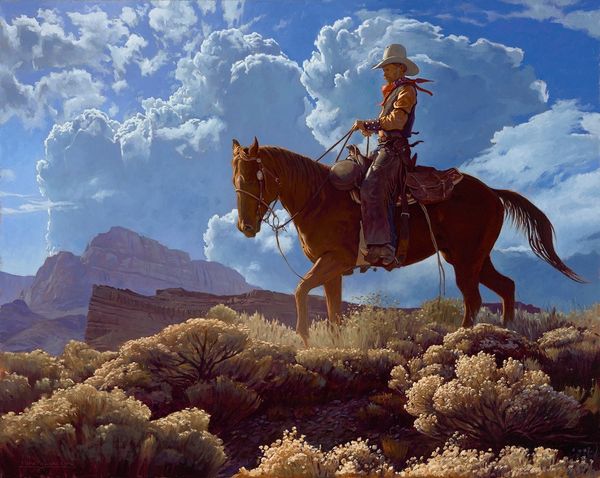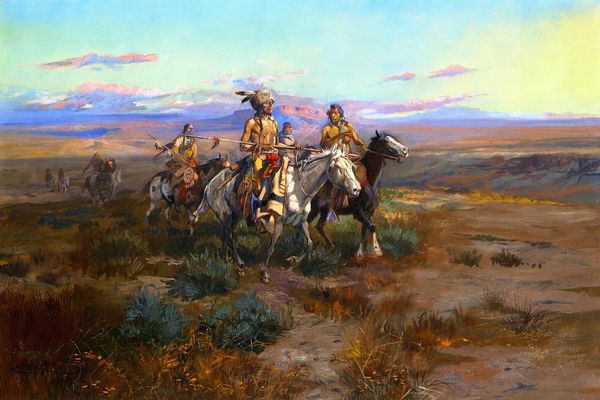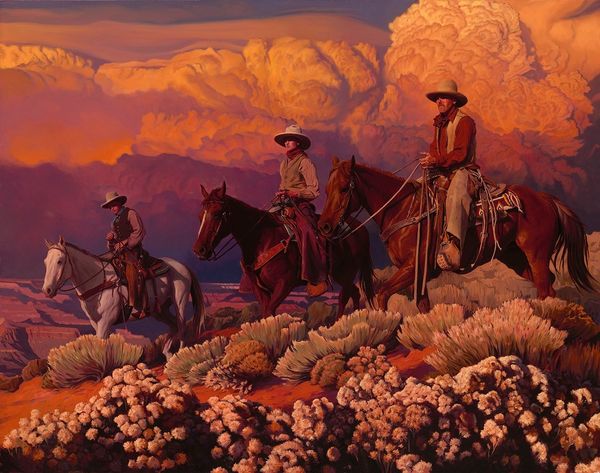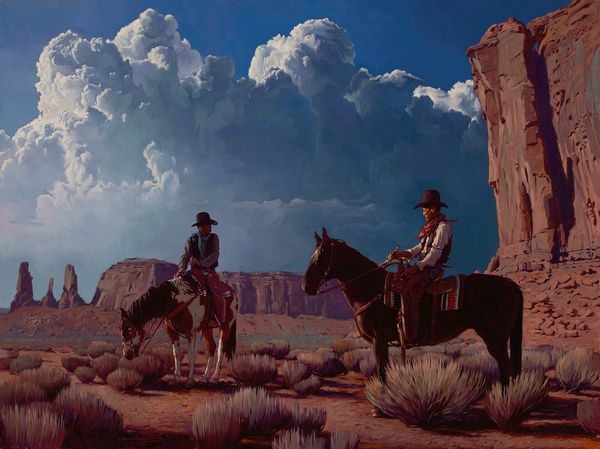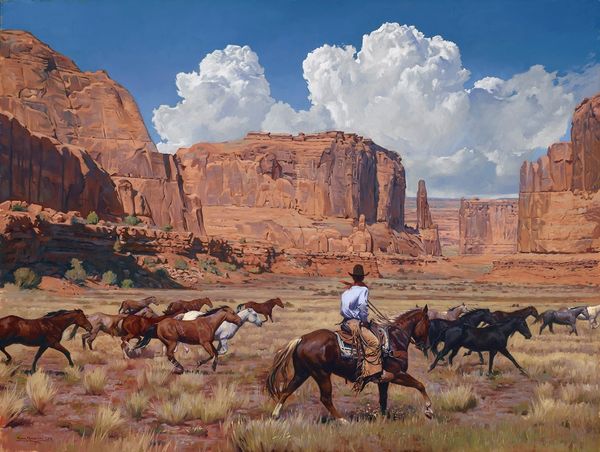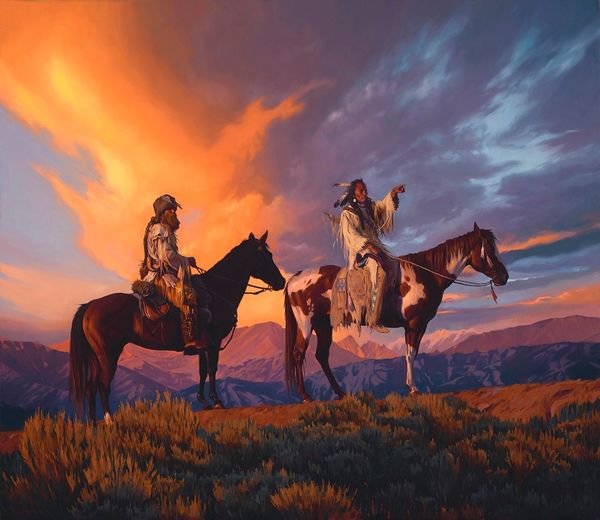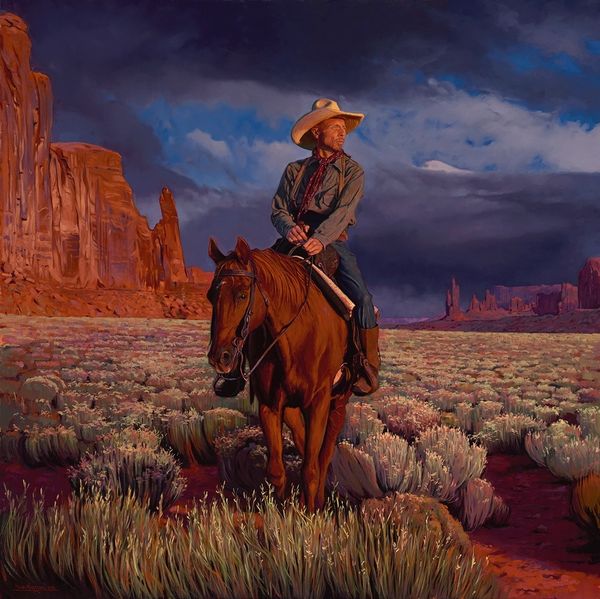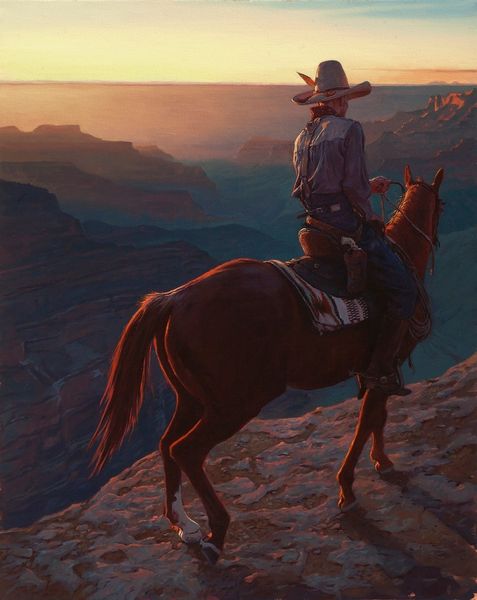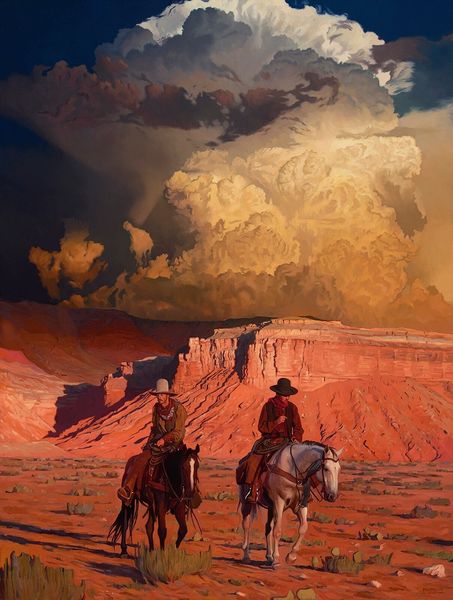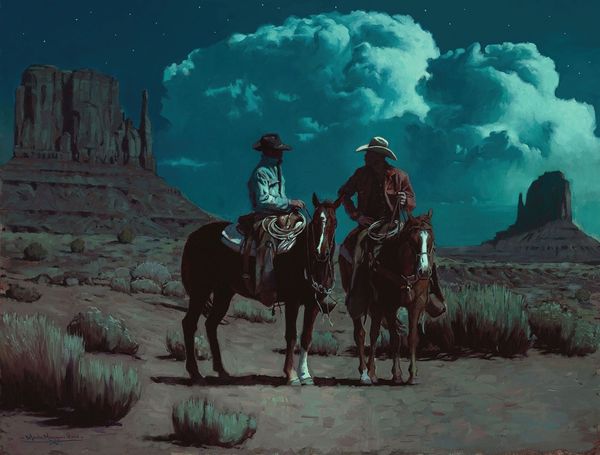
Copyright: Modern Artists: Artvee
Curator: Let’s spend some time with Mark Maggiori's "Entering Utah" from 2017. It's an oil painting that beautifully encapsulates a Western landscape. Editor: My first impression is awe. There is something very still about it despite the riders, almost like a paused moment from a film, highlighting the enormity and stillness of the land. The light hitting the clouds is majestic. Curator: Maggiori, drawing from both realist and romanticist traditions, creates this genre painting as more than just a depiction. He's addressing broader themes of exploration, westward expansion, and its many associated conflicts within the mythos of the American West. How might we unpack the social implications embedded in this particular landscape? Editor: The materials tell part of the story. Oil on canvas, a traditional medium, speaks to a lineage of landscape painting. However, consider the consumption of the "Wild West" imagery. The canvas itself, the pigments, everything produced and circulated within a commodified vision of a bygone era, often eclipsing the grim realities and violent undertones of that very material and social culture. The canvas romanticizes labor and its relation to natural resource extraction through a certain heroic lens. Curator: Absolutely. Viewing this piece through an intersectional lens prompts questions about the narratives that get perpetuated, often overshadowing marginalized voices and the exploitation inherent in these romanticized journeys. We see men dominating this space, their figures boldly positioned against the backdrop, the land itself seeming to be there only to serve their journey. Editor: The covered wagon itself warrants inspection. Its production involved coerced and exploited labor and extraction industries—the very tangible cost of westward expansion hidden behind the painterly glow. Curator: These visual narratives and their construction solidify how we view the West, often divorced from its brutal historical realities for Native peoples, for workers, for the environment. I appreciate how we can apply feminist and postcolonial lenses here, too. Editor: Indeed. Understanding these narratives, understanding the role materials play in shaping ideology can perhaps offer tools for a more nuanced reflection. It moves us from passively beholding to critically examining how the art we encounter carries heavy sociopolitical weight. Curator: By engaging with both the grand historical sweeps and intimate details like medium and process, it allows a deeper, more conscious conversation about the work and its place in history.
Comments
No comments
Be the first to comment and join the conversation on the ultimate creative platform.
